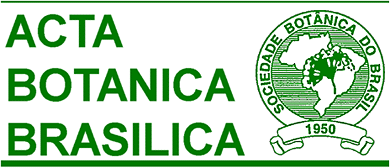Abstract in English:
ABSTRACT Casselia, a small South American genus of Verbenaceae found in Brazil, Bolivia, and Paraguay, has often been misidentified within other angiosperm families. Based on a careful review of herbarium specimens plus fieldwork, the present study provides taxonomic, nomenclatural, and geographical distribution alignments in Casselia, while also shedding light on the reasons why it is a poorly known and overlooked genus. The novelties encompass the redefinition of the boundaries of C. confertiflora, recognition of C. confertiflora var. laciniata at specific level, reestablishment of C. zelota as an accepted species with an epitype designation, as well as geographic distribution readjustment of the C. integrifolia and C. serrata. Consequently, Casselia comprises eight species, occurring along the Atlantic Forest, Cerrado, and Caatinga domains. The only species with a narrow distribution is C. serrata. However, the genus is still poorly collected, and the species populations are not abundant. Furthermore, to aid in the recognition of Casselia and prevent misidentifications, a detailed description of the genus accompanied by plant photographs and an updated identification key are also provided.
